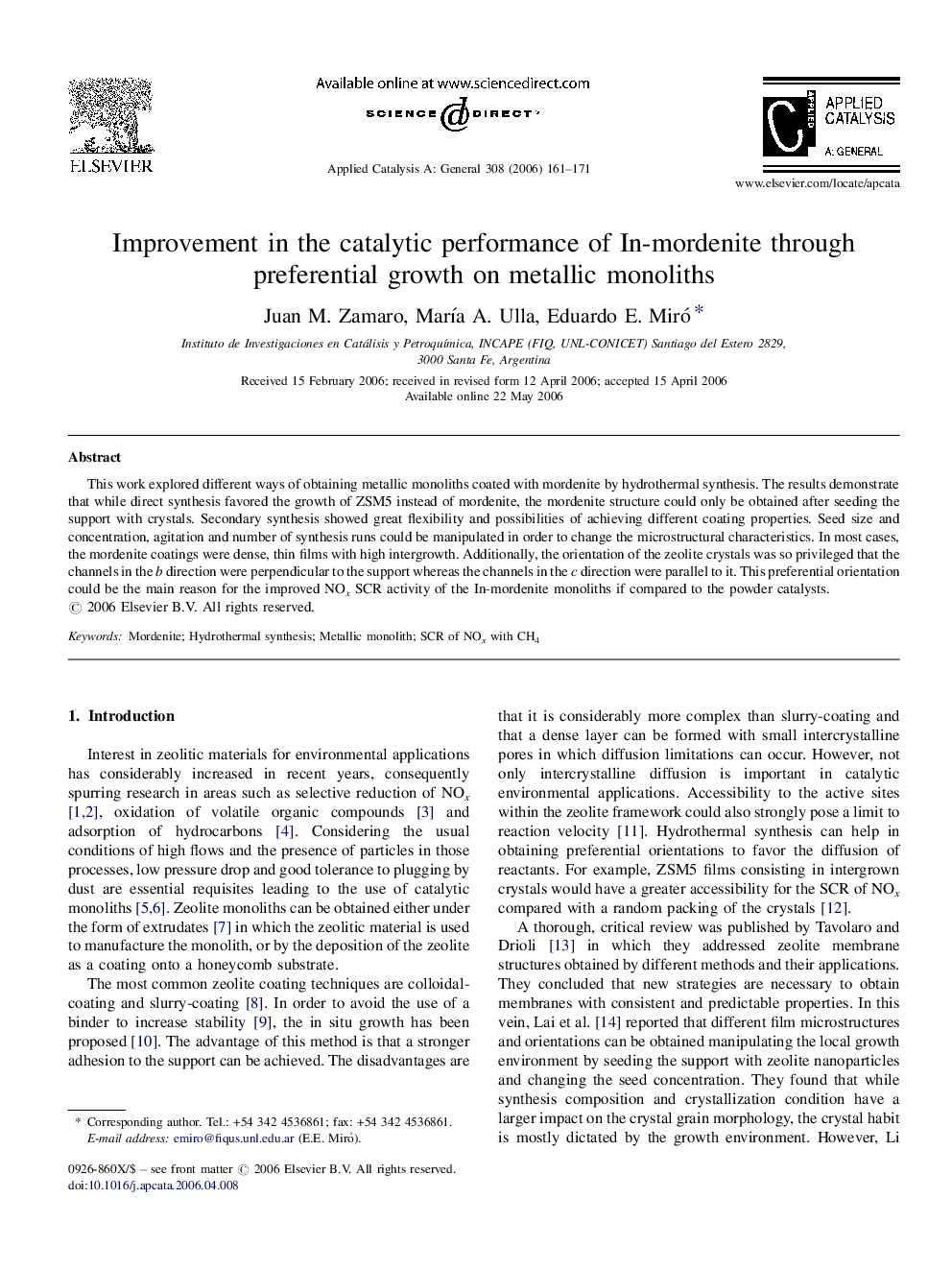| Article ID | Journal | Published Year | Pages | File Type |
|---|---|---|---|---|
| 44312 | Applied Catalysis A: General | 2006 | 11 Pages |
This work explored different ways of obtaining metallic monoliths coated with mordenite by hydrothermal synthesis. The results demonstrate that while direct synthesis favored the growth of ZSM5 instead of mordenite, the mordenite structure could only be obtained after seeding the support with crystals. Secondary synthesis showed great flexibility and possibilities of achieving different coating properties. Seed size and concentration, agitation and number of synthesis runs could be manipulated in order to change the microstructural characteristics. In most cases, the mordenite coatings were dense, thin films with high intergrowth. Additionally, the orientation of the zeolite crystals was so privileged that the channels in the b direction were perpendicular to the support whereas the channels in the c direction were parallel to it. This preferential orientation could be the main reason for the improved NOx SCR activity of the In-mordenite monoliths if compared to the powder catalysts.
